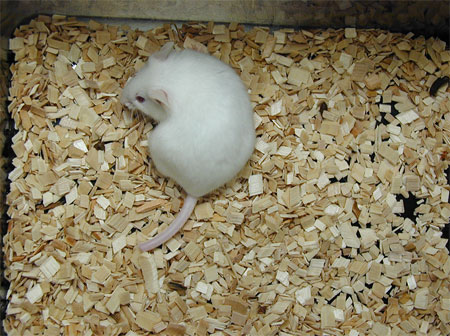| RIKEN Center for
Developmental Biology (CDB) 2-2-3 Minatojima minamimachi, Chuo-ku, Kobe 650-0047, Japan |
| Not the end of the line? New approach to preserving infertile genotypes | ||
December 23, 2004 – Infertile mice, whether the result of systematic mutagenesis or the fortuitous product routine mating, represent a valuable research resource, but one that by its very nature defies attempts at long-term preservation by breeding. The cloning of such unique animals by somatic cell nuclear transfer has been proposed as the sole available means by which such mice can be maintained as a genetic resource over multiple generations. However, the rates at which viable offspring are generated by cloning, generally at less than 2% of all cloning attempts, are consistently too low to be used to maintain reliable supplies of offspring, particularly in inbred strains. Given the extent of their use as laboratory models of both physiology and disease, the problem of how to preserve lines of genetically infertile mice is one of substantial scientific and economic importance. Now, in a report published in the December 23 online edition of the Proceedings of the National Academy of Sciences USA, Teru Wakayama (Team Leader, Laboratory for Genomic Reprogramming) and colleagues at the RIKEN Center for Developmental Biology (Kobe, Japan) and the University of Hawaii (USA) present an alternative to simple cloning as a possible solution to the steep challenge of preserving lines of animals that genetically lack germline cells. The team showed that by applying a combination of nuclear transfer and embryonic stem cell technology, it is possible to produce viable offspring from a sterile hermaphroditic mouse.
The story began with a serendipitous discovery – a genetically male mouse with abnormalities in its Y chromosome that caused it to develop male and female sex characteristics and gonads, but lack both sperm and eggs. Novel mutants with infertile phenotypes are of significant scientific interest, but their inability to reproduce limits the ability to study them extensively, as each individual is, in a sense, the first and last of its line. Wakayama, one the pioneers of mouse cloning, and colleagues determined to try to preserve a genetic copy of the animal by traditional cloning techniques as well as by cloning by nuclear transfer from embryonic stem cells (ntES), but despite multiple attempts, the team was unable to produce live pups. They next tried a new twist on cloning by ntES technology, which involves the generation of an ES-like cell line from somatic cells of donor a donor mouse by nuclear transfer; such ntES cells demonstrate the same developmental potential as ES cells created using traditional methods. By injecting embryonic stem cells derived from the albino hermaphrodite donor into early-stage host embryos (called blastocysts) possessing either two (diploid) or four (tetraploid) sets of chromosomes, the team sought to take advantage of a phenomenon called “tetraploid complementation,” in which the contribution of a tetraploid embryo that receives a transfer of embryonic stem cells is restricted to extraembryonic tissues, such as placenta, making the transferred ES cells the sole contributors to somatic development. These attempts produced a total of 27 live first-generation chimeric pups, twelve of which were selected to study germline transmission of the albino hermaphrodite nuclear sire’s genome. While several of the diploid chimeras were able to produce offspring through normal mating, none of the resulting pups were perfect copies of the original hermaphrodite phenotype. Several albino pups, however, were born in the second generation, indicating that an infertile genome could contribute to a viable germline via ntES. (Albinism is a recessive trait and was used as an indicator of germline transmission, as the host blastocysts came from mice with colored coats.) While providing proof of principle that nuclear transfer embryonic stem cells represent a promising technique for the preservation of mouse lines, the study also raises important questions about the fidelity of genomic reproduction by ntES cloning and the extent to which tetraploid complementation can be relied upon to produce “pure” strains of mice for laboratory use.
|
||
|
||
[ Contact ] Douglas Sipp : sipp@cdb.riken.jp TEL : +81-78-306-3043 RIKEN CDB, Office for Science Communications and International Affairs |
| Copyright (C) CENTER FOR DEVELOPMENTAL BIOLOGY All rights reserved. |
